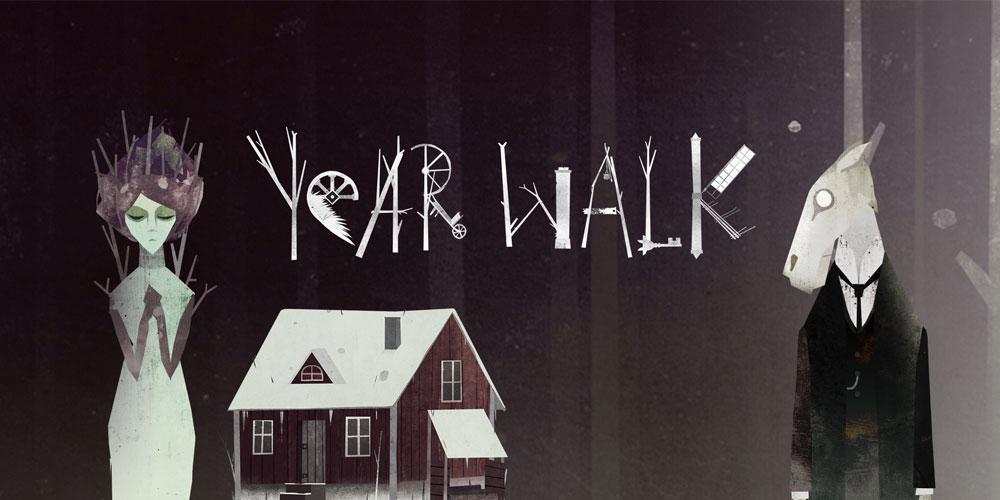On iPhone, I explored “Year Walk,” created by Simogo for 12+. For procedures, players accomplish challenges (involves holding, tapping, dragging, etc) in a mythical land. Arrows emerge on the bottom/top when players roam; they swipe in the direction of the arrow to go that way, or left/right to go in those directions.
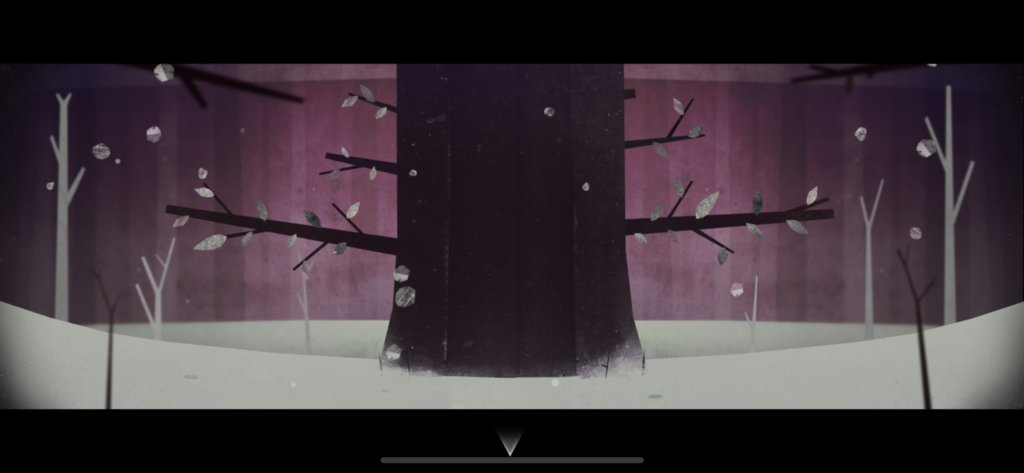
The game has implied rules and won’t let players execute illegal actions. Players can face conflicts/obstacles (like turning a doll’s head enough times) and clues (like the doll’s choreography). The app screen is the boundary.
Year Walk is player vs game. The objective is to discover the future through overcoming challenges. The outcomes are essentially non-zero-sum. Resources include useful objects players can gain, like purple fire or a key, to help obtain the next clue or overcome subsequent obstacles.
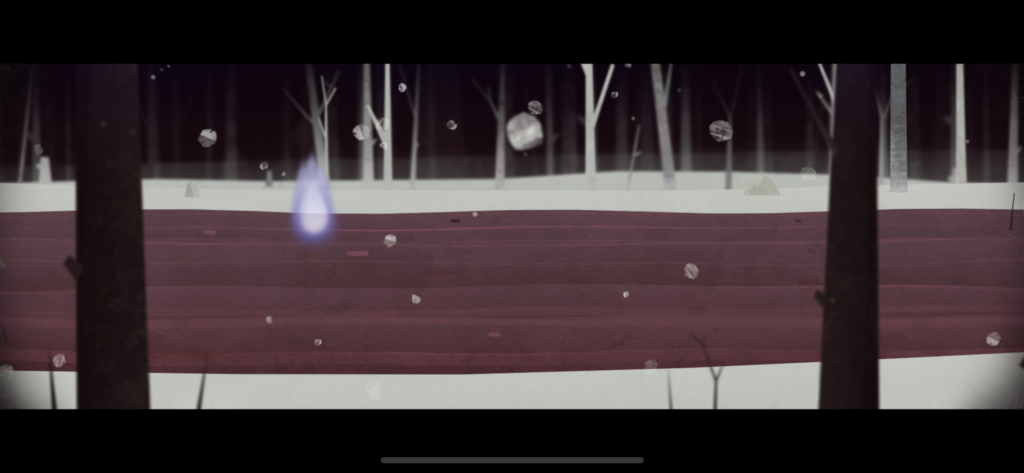
Year Walk is mostly successful at fantasy, sensation, discovery, and narrative types of fun. For sensation, it boasts breathtaking imagery. For fantasy, it has mythological beings. For discovery, it has challenges the player discovers by roaming. Although narrative fun was done well, the game could have done a better job; there was a lot of roaming around that lacked guidance (but this may also be because I am unfamiliar with walking sims, although I think the game could still have done more to acquaint beginners). Because narrative fun emerges through characters’ depictions and interactions with mythical beings, I didn’t experience much narrative fun, because it took too long for me to discover these beings and challenges as a beginner.
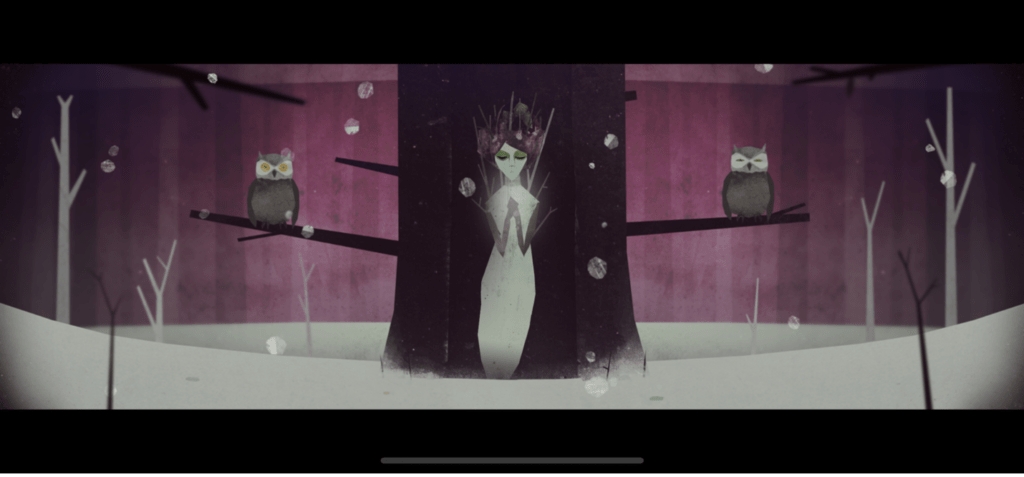
The mystery is finding out the future; the game attempts to weave narrative into the journey of uncovering this mystery through imagery and interactions of figures such as the wood-nymph-like figure and the goat-like lake guy who wanted the player to recover dead babies. The game uses evocative spaces as its narrative architecture, as its style of artwork is reminiscent of the magical lands one reads in fantasy books. Additionally, the game uses enacting stories as its narrative architecture too, with micronarratives that emerge during mini-challenges/tasks, like giving the goat-like lake man his dead babies.
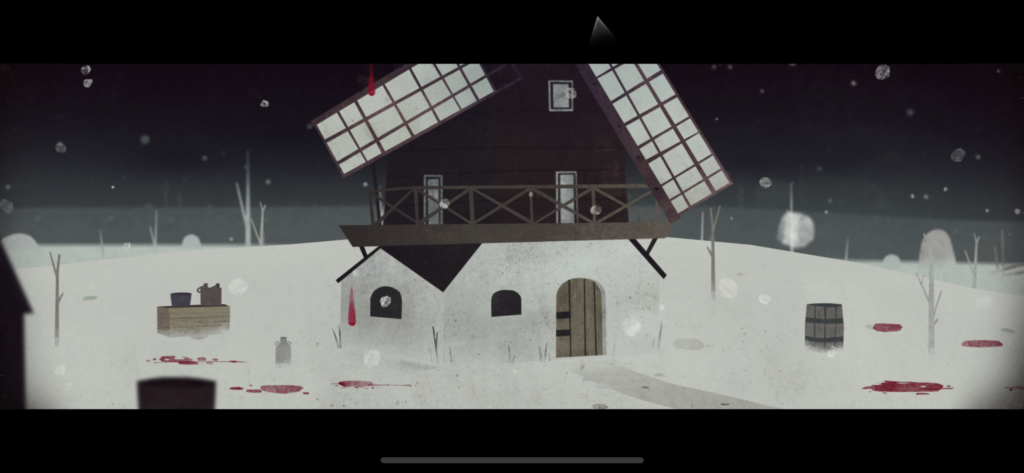
Game mechanics support the mystery. For example, players accomplish tasks/challenges to progress towards uncovering the mystery. Each time the player accomplishes a challenge, she wonders whether that challenge was a hint to what happens in the future (the answer to the mystery). Because the challenges are enigmatic, the mystery is upheld/supported, leaving the player guessing how everything is ultimately connected.
Even though I liked the challenges being enigmatic (since this keeps me on the edge of my seat in terms of wanting to figure out how it all relates to the mystery), I would have liked it if the clues “made more sense,” in terms of contributing to the story. It seemed like a lot of the clues and challenges were more just “themed-based” rather than related together in the sense of a continual mystery story. For example, the challenges of trying to return the babies to the lake man fit the theme of “creepy” and “spooky,” but I have no idea why it makes sense that I need to overcome the challenge of bringing the babies back to the lake man; by “makes sense,” I mean that the challenges didn’t really fit into a mystery story. In other words, I didn’t feel like I was uncovering part of the mystery as I was solving challenges. Instead, I felt like I was just overcoming random challenges that didn’t clue me in to uncover more of the mystery. On one hand, this could be a good thing, because it did keep me on the edge of my seat; I wanted to keep completing challenges, because I thought that the next challenge might be the one that makes the previous challenges make more sense and allow me to discover more of the mystery. But on the other hand, I felt like having the challenges contribute more to the mystery continuously would have also motivated me to keep playing the game, because I would have been able to uncover more of the mystery as I went along (as opposed to only uncovering the mystery at the very end of the game).
A successful moment was when I returned dead babies to the lake man. A moment of failure was when it took me forever to uncover/accomplish the first challenges (I didn’t know where they were or what I was supposed to do).
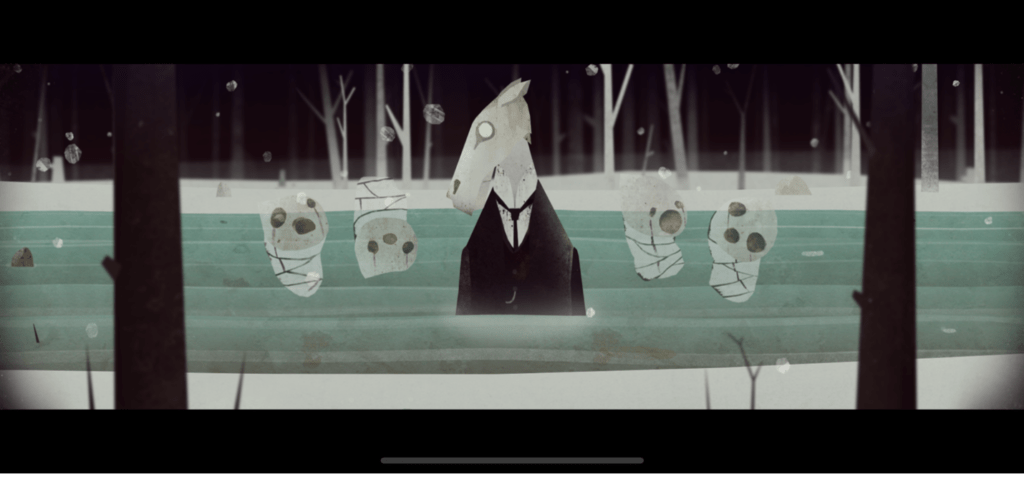
To improve Year Walk, I would integrate more initial direction for beginners, since it might be unclear what one is supposed to do. Moreover, more direction towards challenges would enhance narrative fun by getting the player to encounter creatures and challenges faster.
Through Year Walk, I learned how to integrate narrative architectures into games.


